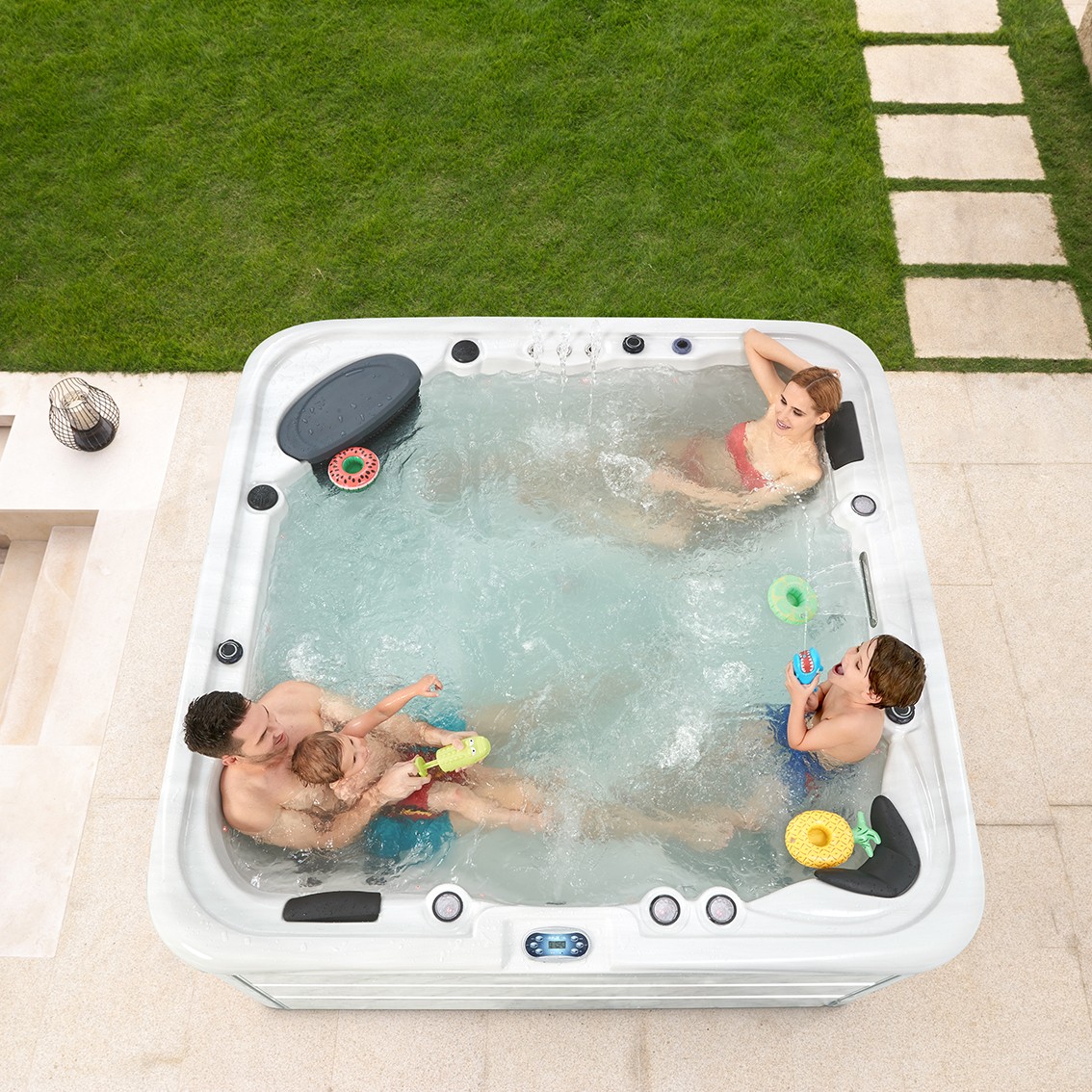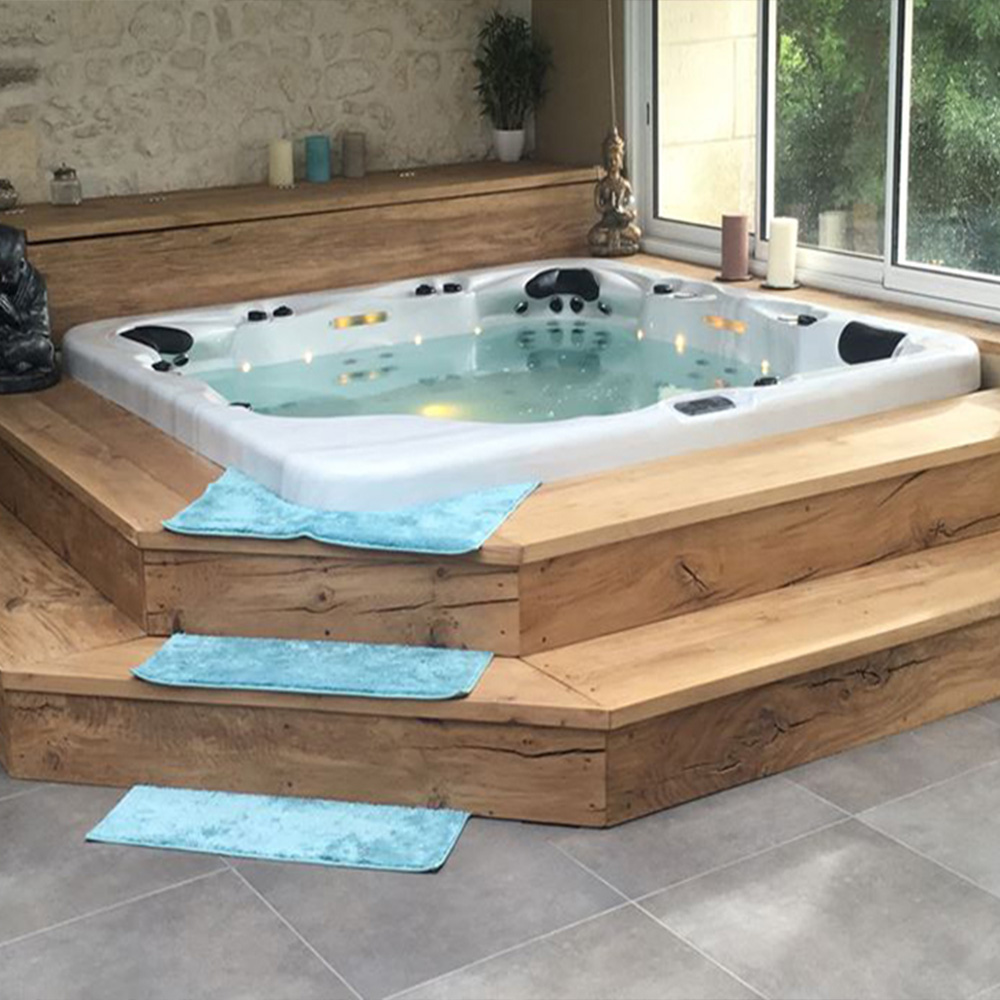
Which is better for treating arthritis, a hot tub or a sauna?
2024-09-10 15:30Arthritis is a common chronic disease that affects millions of people worldwide. Arthritis patients often suffer from joint pain, stiffness, and swelling, which affects the quality of daily life. In order to relieve symptoms, many patients seek various treatments, among which hot tubs and saunas have attracted much attention due to their thermal therapy effects.
So, which is better for treating arthritis, a hot bathtub or a sauna? This article will explore the advantages and disadvantages of these two treatments in depth to provide a scientific reference for arthritis patients.

What is the principle of hot tub treatment of arthritis?
Hot tubs use the thermal effect of warm water to promote blood circulation, relax muscles, and relieve pain by raising the temperature of the body locally or as a whole. Hot tubs are usually kept in a temperature range of 37 to 40 degrees Celsius. The warm water flow and water pressure can massage joints and muscles, helping to relieve arthritis symptoms.
How effective is a hot bathtub in treating arthritis?
● Relieve pain and stiffness: The thermal effect of warm water can increase blood flow to the affected joints, bring more oxygen and nutrients, help repair damaged tissues, and relieve pain and stiffness.
● Relax muscles: The buoyancy of water can reduce the burden on joints, relax muscles, and reduce muscle tension and spasms.
● Improve sleep: The relaxing effect of hot tubs can help improve sleep quality, which is especially important for arthritis patients who suffer from insomnia due to pain.
● Enhance mood: Soaking in a hot bathtub can bring a pleasant feeling and relieve psychological stress and anxiety caused by long-term pain.
★Scientific research support
Several studies have shown that hot tubs have significant therapeutic effects on arthritis patients. For example, a study on osteoarthritis patients found that regular use of hot tubs can significantly reduce knee pain, improve joint function and quality of life.

What is the principle of sauna treatment for arthritis?
Sauna uses a high temperature environment to promote blood circulation and sweat and detoxify by heating the body surface. The temperature in the sauna room is usually between 70 and 100 degrees Celsius, and the humidity is low. Through sweating and high temperature, saunas can relax muscles and relieve joint pain and stiffness.
How effective is sauna in treating arthritis?
● Promote blood circulation: The high temperature environment can dilate blood vessels, increase blood flow to joints and muscles, and promote metabolism and tissue repair.
● Detoxification: Sweating helps to expel toxins from the body and relieve arthritis symptoms.
● Pain relief: High temperatures can relax muscles, reduce muscle and joint tension, and relieve pain.
● Psychological relaxation: The relaxing effect of saunas can help relieve psychological stress caused by arthritis and improve mood.
★Scientific research support
Studies have shown that saunas can effectively relieve arthritis symptoms. One study found that regular use of saunas can help reduce pain and stiffness in patients with rheumatoid arthritis, improve joint flexibility and quality of life.
Comparison between hot bathtubs and saunas
1. Convenience of use
Hot tubs are usually installed at home or outdoors and can be used at any time. Saunas require special equipment and venues, usually located in gyms, spa centers or high-end homes. For the convenience of daily use, hot tubs have more advantages.
2. Treatment temperature and time
The temperature of hot bathtubs is relatively low, suitable for long-term soaking (usually 20 to 30 minutes), and less irritating to the body. The high temperature environment of saunas is not suitable for long-term stays (usually 15 to 20 minutes), and patients with weak constitutions or cardiovascular diseases need to use them with caution.
3. Individual tolerance
Different individuals have different tolerances to heat therapy. Some arthritis patients may be sensitive to high temperatures and cannot tolerate the high temperatures of saunas. However, the temperature of hot tubs is milder and most people can accept it.
4. Comprehensive treatment effect
Hot tubs and saunas are both effective in relieving arthritis symptoms, but their mechanisms of action and applicable populations are different. Hot tubs are suitable for long-term use and have long-lasting effects through warm water massage and buoyancy decompression. Saunas promote blood circulation and sweating through high temperatures and are suitable for short-term and efficient treatment.

Conclusion
Hot bathtubs are suitable for long-term use and have long-lasting effects through warm water massage and buoyancy decompression, and are convenient to use. Saunas promote blood circulation and sweating through high temperatures and are suitable for short-term and efficient treatment, but attention should be paid to the tolerance and safety of high temperature environments.
Arthritis patients can choose the appropriate treatment method according to their own conditions and doctor's advice, or use a combination of the two to achieve the best treatment effect.
I hope that the detailed analysis and suggestions in this article can provide valuable references for arthritis patients and help them make wise treatment choices.
